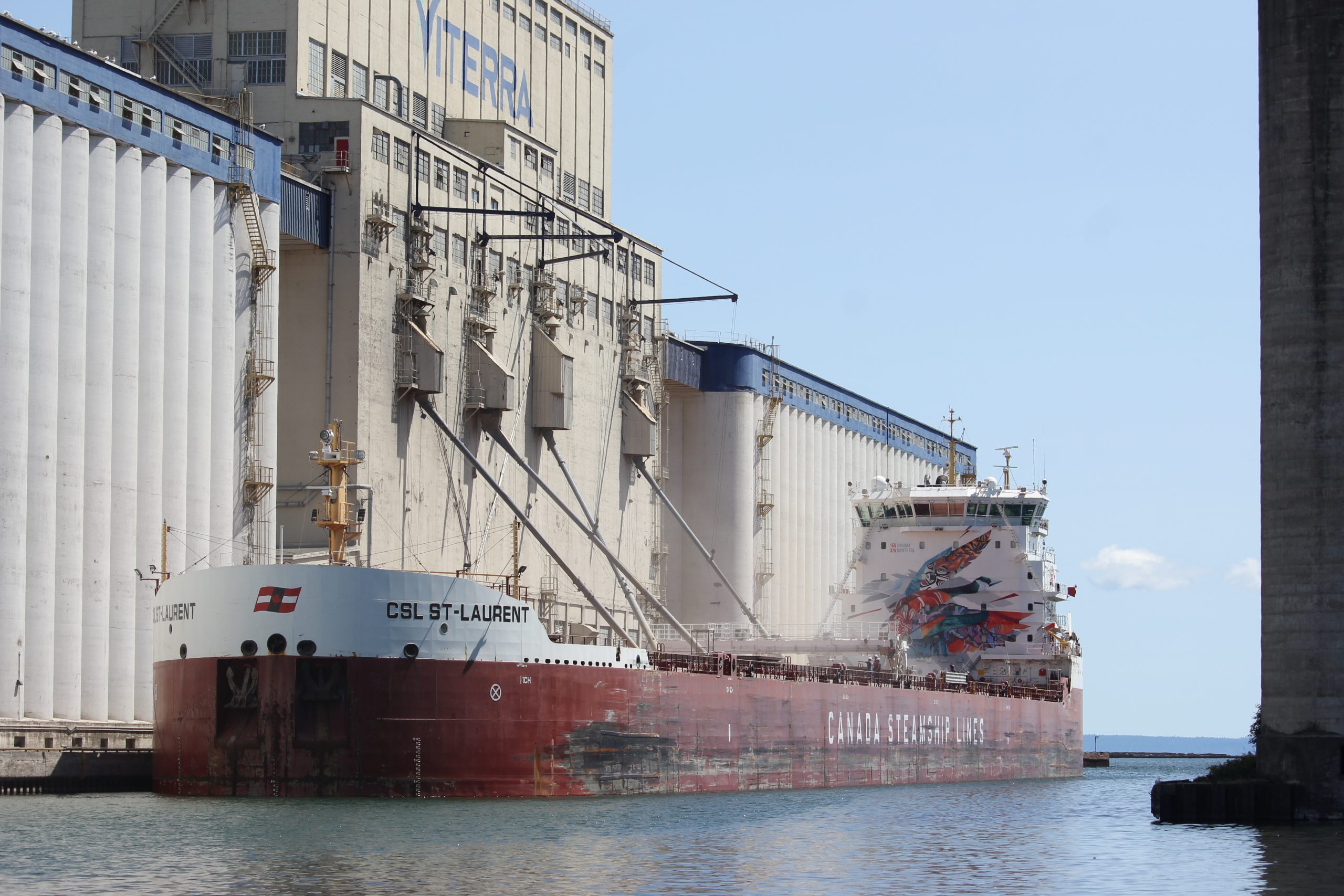Marine shipping on the Canadian Great Lakes-Seaway corridor continues to show resilience and consistency in a year that began with economic uncertainty and ongoing disruptions in the global supply chain.
In August, the year-to-date cargo traffic within the Seaway System reached 19.9 million tonnes, which is consistent with the 19.8 million tonnes transported during the same period in 2022. As cargo movements pick up, shippers are finding efficiencies by moving greater volumes per Seaway transit, which has economic and environmental benefits.
“Marine shipping on the Great Lakes and St. Lawrence Seaway continues to be the most reliable, efficient and sustainable mode for transporting goods,” noted Terence Bowles, President and CEO of the St. Lawrence Seaway Management Corporation (SLSMC). “Canadian grain shipments are showing positive trends and we are optimistic that increased activity within our Western Canadian supply chain will amount to good volumes through the close of the season.”
There has been tremendous demand for western Canadian grain as a result of the conflict in Ukraine. To date, approximately 4.6 million tonnes of Canadian grain has travelled the Seaway, representing a 28.27% increase over the prior year – marking its fourth best year-to-date result since 2003.
Key construction commodities also showed year over year gains in August. Almost 1.2 million tonnes of cement and clinkers having traveled the system this year (a year over year increase of 205,000 tonnes, or 20.65%). Stone also saw increased annual traffic, with 158,000 tonnes transiting the system (a year over year increase of 73,000 tonnes, or 86.43%.)
“New construction, modernization and infrastructure activity remained strong throughout the first part of the year in U.S. & Canadian Great Lakes Markets,” said Kelly Curtis, SVP, Cement Sales and Logistics for VCNA/St Mary’s Cement. “The flexibility of our maritime operations played an essential role in our ability to respond and adapt to changing dynamics in our operating environment.”
As the marine shipping industry keeps up with the needs of businesses and consumers who rely on the effective movement of commodities, it is also taking steps to secure the talent needed to satisfy those needs into the future. The Canadian Marine Careers Foundation, in partnership with Canadian Geographic Education, recently announced the launch of Marine Month in Canada – an initiative designed to highlight career opportunities within Canada’s marine sector. Throughout October 2023, this month-long celebration will engage youth with marine education and potential career pathways as students connect directly with marine industry experts nationwide. Those pathways include crew positions on vessels transiting the Seaway and other parts of Canada, as well as roles at ports, shipyards and in government departments.
“Marine employment, spanning more than 100,000 skilled workers and professionals across Canada, stands at a crucial juncture,” says Julia Fields, Executive Director of the Canadian Marine Careers Foundation. “With 43 percent of the workforce set to retire in the next decade, we have thousands of vital roles to fill. The marine sector, with its extensive coastline and waterways, plays an enduring role in shaping our nation, and Marine Month in Canada aims to reveal how it influences our lives every day.”
(Photo Port of Thunder Bay)





